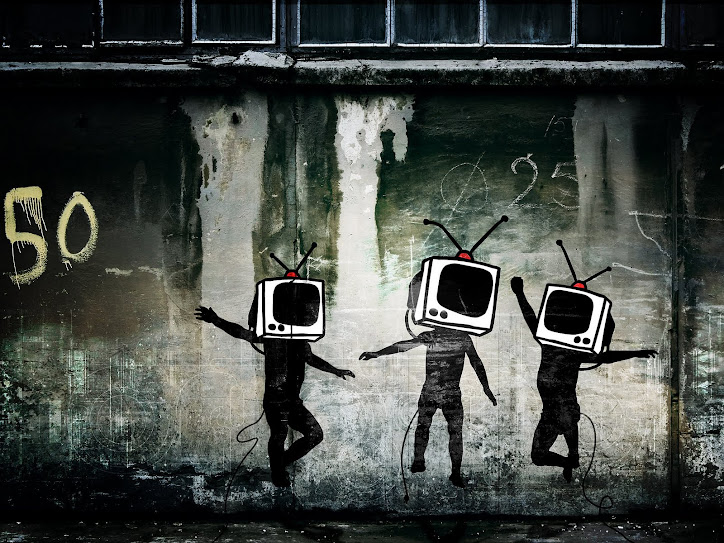Made as a neo-noir derivative of Michelangelo Antonioni’s “Blowup”, Brian De Palma’s “Blow Out” satisfies fans of his psychological thrillers with an edgy thematic scheme of sound technics. The title “Blow Out” is a double entendre for the burst of a tire and the result of sending too much power to speakers that kill the sound and not, unfortunately, the hairstyle trend known as the “Brooklyn Fade”. Of the foppish hairstyles donned in Grease and Saturday Night Fever, John Travolta will grace us no more but blonds aplenty we do have.
The film opens with a ‘movie within a movie’, a B-level horror film that pays homage to “Black Christmas.” The story involves a serial killer who peers through windows of a sorority house in voyeuristic point of view shots. The production is stymied at a shower scene that directly alludes to "Psycho" when the busty blond is unable to deliver a “decent” blood-curdling scream. It’s a chuckler when, ipso facto, Vivian Leigh's screams in “Psycho” are dubbed over by a staccato of shrieky violins. Jack the sound technician (John Travolta) sets out to find a girl with the perfect scream to dub over the more pitiful attempts. (The character director, Jack Terry, should have used cold water.) De Palma’s crude humor never fails to make its appearance with Jack Terry remarking, “I didn’t hire her for her scream, Jack, I hired her for her tits!”
During Jack’s night out dilly-dallying with the frogs and the owls in a park, he falls privy to witnessing (and subsequently recording) a car crash involving a governor and his mistress Sally (Nancy Allen). With his suspicions piqued after a “friend” of the governor implores Jack’s silence over existence of the mistress he saves, he replays the sounds of the incident and discovers that the governor was actually murdered.
Although posters of B-horrors are plastered all throughout Jack’s studio, Brian de Palma lifts “Blow Out” from the inferior realm of the B-horror with his uncanny reinterpretation of Hitchcock’s camera techniques and neurotic fascination with bomb-shell blonds who are not as they ostensibly appear. Of his ostentatious camera tricks, his long 360 degree pan gives the zoom out, track in shot from “Vertigo” a run for one of the most bewildering camera effects. Imagine being more confused than Woody Allen as Miles in “Sleeper” when entangled in hundreds of feet of tape reel. With the use of saturated filters of blues, yellows, and especially reds draped by dark shadows, this neo-noir feels as menacing and sleazy as it can get. Throw down the uncomfortably close character and object close-ups and camera pans over room ceilings and through objects and you feel as unsettled and trapped as Jodie Foster's character in David Fincher’s “Panic Room”.
Among his nifty bag of camera tricks with canted angles, tight framing, split screens, wide-angle lens, and voyeuristic over-the-shoulder tracking shots, his prestidigitation with sound is akin to Robert Bresson manipulation of sound in “A Man Escaped.” A heightened sensitivity to sound effects aids the main character's great escape from prison and subsequent execution. In the case of “Blow Out”, Jack relies on a wired-tape recorder attached to Sally to keep the killer from claiming his final target.
While you never feel alone with Jack and Sally with the constant activity, mirrors, or photographs of people in the background, as Jack states, “I wish you only had to worry about me”, people and things are also not as they appear. Sally, as a make-up artist, describes playfully how her face is not as natural as it seems. The governor’s associates successfully cover up for the debased governor who was framed in a sex-scandal with Sally. The dirty cops Jake entrapped, by hook and by crook, in his previous wired-tape gigs with the police were affiliated with the mob. John Lithgow, as Burke the killer, masks his fatal plan for Sally with a pseudo-sex killing spree like the Sunset Strip Murders. Paint the town in red herrings, and shades when a young blond is to be murdered, and agitate not only figurative bulls but the audience as well.
Warnings of foreboding such as the paralleled murders of the cop who died as a result of Jake’s failed wired-tape attempt and the second blond prostitute suggest that Sally is likely to be murdered. The shocker comes from the realization that several moments in the film allude to John F. Kennedy's assassination. There were connotative conjectures about the governor, such as the exclamation “that man was going to be our next president”. The hidden gunman targeting the governor’s vehicle, the affair with a blond, and the political innuendos of the Liberty Bell celebrations were all one extended parable for John F. Kennedy’s assassination.
Within the spectacular display of De Palma's cinematic tricks and allegories, the scene with the fireworks is probably the one blot on the landscape. Yet, the way De Palma wraps up this blood-and-thunder romance with Jack’s eventual recording of the perfect scream renders it all but forgotten in the end.
Subscribe to:
Post Comments (Atom)


No comments:
Post a Comment